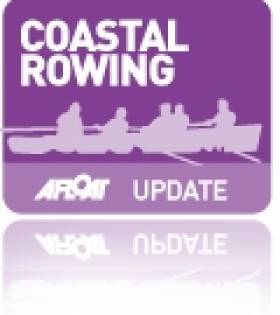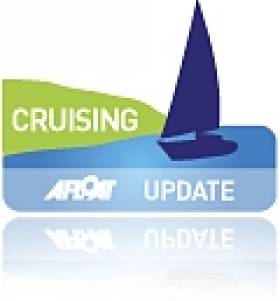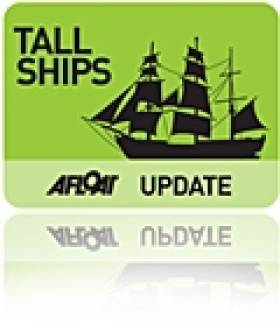Displaying items by tag: Arctic
Global wind and solar company, Mainstream Renewable Power today announced its sponsorship of a rowing expedition attempting a world first through the infamous Northwest Passage in the Canadian Arctic this summer. Three experienced Irish adventurers and one Canadian are attempting to become the first ever people to cross the 3,000 km passage by human power alone in a single season – a feat which is only possible due to the melting ice which normally renders it impassable.
Irishmen Paul Gleeson, Denis Barnett and Kevin Vallely along with Canadian Frank Wolf will set off from Inuvik in the North West Territories on the first of July in their 25ft long customized rowing boat "The Arctic Joule". The four men will row in continuous shifts 24 hours a day, seven days a week as the route will be in constant daylight for the majority of the journey which is expected to take two to three months, ending at Pond Inlet in Nunavut.
Eddie O'Connor, Chief Executive of Mainstream Renewable Power said: "Mainstream is proud to sponsor this expedition because it draws attention to the disasters of global warming. The expedition can only happen because the polar ice caps are melting at an alarming rate. The melting of the permafrost and the release of methane hydrate is perhaps the biggest single calamity that mankind faces and it's all down to human-induced global warming. This expedition allows us to demonstrate to the world that there is an answer to global warming. We don't have to do without electricity. We can have our electricity supplied by renewable sources.
He continued: Just last month, World Bank President Jim Yong Kim said that if we have any hope of keeping climate change below two degrees Celsius, the peak year of carbon emission has to be 2016. I hope this expedition will show world leaders that we need to act now."
This announcement comes as EU Environment Ministers met at Dublin Castle last week to discuss a range of important environmental and climate issues as part of the Irish Presidency agenda.
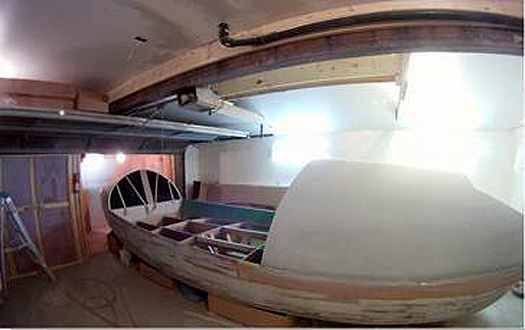
The rowing boat for the passage under construction
Speaking about the expedition Paul Gleeson said: "We are very pleased that such a successful, Irish renewable energy company with a global presence feels as passionately about this as we do. It wasn't long ago that the Northwest Passage was the sole domain of steel-hulled ice-breakers. We hope by making this traverse completely under human power in a row boat, without sail or motor, in a single season we will be able to demonstrate first-hand the profound affects climate change is having on our world."
The Northwest Passage is a route through the various islands of the Canadian archipelago which over the years has witnessed some incredible tales of courage, disaster and hardship. In 1845, fellow-Irishman, Francis Crozier from County Down joined Sir John Franklin on the same expedition in the HMS Terror, an expedition which ended in disaster and to this day remains unsolved.
Irish Adventure Sailors Heading for the Arctic Circle
#arctic – A Galway to Greenland 2013 odyssey is underway as Irish adventurers are setting sail for the Arctic Circle this Summer. Preparations are currently underway for an ambitious and exciting expedition from Galway to Greenland this summer. Organised by Killary Adventure Expeditions, 'North of Disko' will see a crew of sailors, kayakers, climbers, a photographer and filmmaker set sail for the northwest coast of Greenland in mid June.
The crew aim to cover the 1500nm to Nuuk, the capital of Greenland, in about 14 days and then continue north, reaching Upernavik, well inside the Arctic Circle, a week later. From there, a team of four will set out on a 300km unsupported sea kayak, navigating through fjords and ice fields, while the team of three climbers will begin to tackle a series of first accents, as they follow the kayakers south.
Adding a further dimension to the expedition, photographer Daragh Muldowney aims to explore and capture the beauty of this spectacular coastline, with the aim of publishing a book and hosting an exhibition upon return. The entire expedition and its achievements will also be documented through film.
Leading the crew on board the 49ft, ex admirals cup racing yacht the 'Killary Flyer' is Jamie Young, whose previous expeditions include the successful Irish Cape Horn Sea Kayak Expedition in 1989, the Guinea Bissau Sea Kayak Expedition in 1992, and the 'South Aris' expedition, which attempted to re-enact Shackleton's epic boat trip from Elephant Island to South Georgia, in 1997.
The crew is mixed in age and experience and includes four young twenty-somethings embarking on the adventure of a lifetime, as well as seasoned kayakers Ali Donald, Kevin O'Callaghan and climber Collin Gibbon.
Further information on the expedition, crew and updates on preparations can be found at www.northofdisko.com
#ISLANDNATION – The effect of six-on/six-off hours of watchkeeping on accidents at sea, boat hooks aboard lifeboats, 67 children drowned in 10 years, a traditional beauty in Cork Harbour and the astonishing discovery beneath the Arctic ice are my topics this week.
SIX-ON SIX-OFF WATCHES AND SEAFARER FATIGUE
Seafarer fatigue and tiredness have been blamed as contributory factors in shipping accidents. Though seafarers and accident investigators have regularly drawn attention to the issue, much of this has been anecdotal. The six-on/six-off watch system has come in for criticism as the cause of stress and tiredness. The Nautical Institute, the professional body for seafarers, says that for the first time scientific proof has established that tiredness levels are the "real issue that seafarers and accident investigators have known it to be for years."
The evidence is in the EU-funded Horizon Project co-ordinated by Warsash Maritime Academy, part of Southampton Solent University with partners in Sweden and elsewhere, which measured the effects of different watch-keeping regimes. It provides advice to relevant authorities on how to address the issues and a fatigue projector tool developed for risk mitigation processes.
BOAT HOOKS AND LIFEBOATS
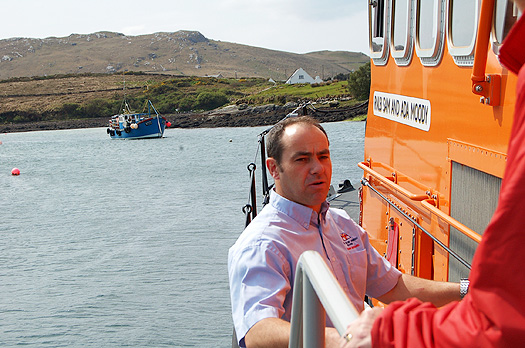
Stephen McNulty, Achill lifeboat mechanic
"There are two boat hooks on the lifeboat. The starboard one is blue and the port is white and they are the only items on the modern boat which remains as a tradition from the past."
When Stephen McNulty, Achill Lifeboat's Mechanic told me that, I learned something new about maritime tradition. I love visiting lifeboat stations. They are very special places with a strong sense of community spirit, the foundation base for the lifeboat service. I was being shown around the Achill Trent class boat, Sam and Ada Moody, on the pontoon at Cloghmore in Achill Sound, an area of magnificent coastal scenery with the highest cliffs in Ireland. Achill lifeboat crews have received eight awards for gallantry.
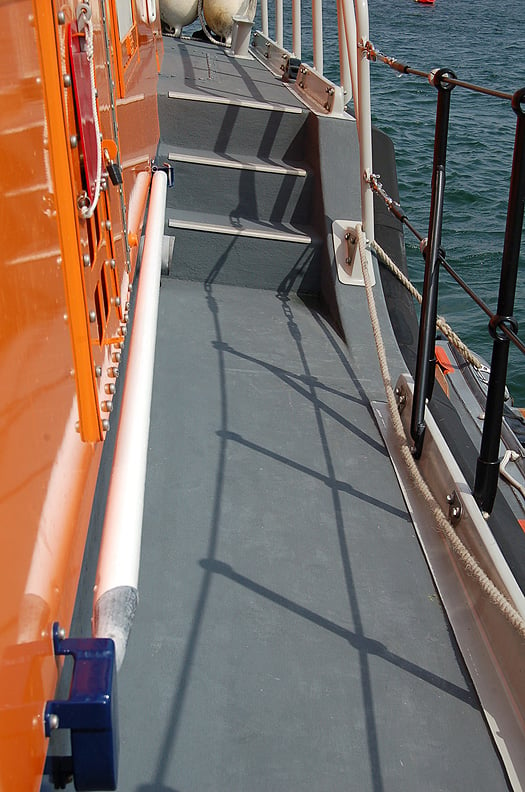
Achill lifeboat - white pole on port side
"I saw you looking at the boat hooks and thought you mightn't know their background," Stephen McNulty chuckled as he saw me looking more closely at them and wondering why I hadn't noticed them before on other boats!
"Traditionally on the old rowing lifeboats, when the boats were wood and the men were steel, the oars were blue on the starboard and white on the port side," he said. "It continues the tradition in the way we have them aboard today and they remind us of what those in the past did for the saving of life and the challenges they faced."
67 CHILDREN DROWN IN 10 YEARS
The Irish Water Safety Association has drawn attention to the start of summer holidays for primary school children in a few weeks, "many of whom may lack an awareness of how to stay safe when playing near or on the water."
John Leech, CEO of the Association and a former Naval Service Officer, is a man I have known for many years whose dedication to the concept of safety on the water has driven awareness of wearing lifejackets on leisure craft and urging fishermen to wear personal buoyancy at sea.
"Sixty-seven children aged fourteen and under drowned in Ireland in the last ten years. Responsible parental supervision guarantees child safety yet tragic drownings occur every year when children escape the watchful eye of guardians."
The Water Safety Association's "PAWS" programme (Primary Aquatics Water Safety) is a component of the primary school curriculum teaching children how to stay safe around water.
TRADITIONAL BOATS
The beauty of traditional boats was evident in Cork Harbour when the beautiful craft pictured here sailed past while I was on the water on Bank Holiday Monday. Many more traditional craft will be on the harbour waters next weekend, June 15, 16, 17 when the annual Crosshaven Traditional Sail is held, organised by a local committee in association with Crosshaven Vintners. It is always a great weekend to meet and talk with the owners of traditional boats who are so outgoing with information about their boats, conveying the pride and dedication which are an essential ability of the owners of traditional craft.
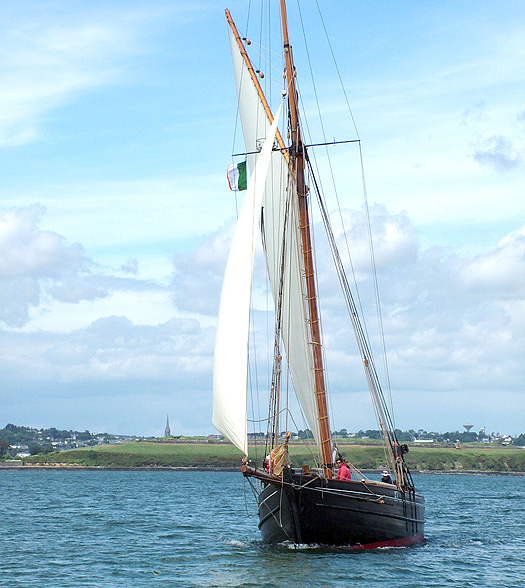
The beauty of traditional boats in Cork Harbour
Pat Tanner is the event Co-ordinator with the experienced sailor, Dave Hennessy, as Officer of the Day. Boats can register on arrival at Crosshaven Pier. For everyone who turns up, afloat and ashore, adults and children, they are running a "Mad Fish Headgear Competition" – 'Let everything nautical go to your head.'
ASTONISHING ARCTIC DISCOVERY
Scientists from Stanford's School of Earth Sciences in the USA have reported the discovery of a massive bloom of phytoplankton beneath the ice of the Chukchi Sea in the Arctic, which they say challenges long-held assumptions about the Arctic's ecology. The scientists from Stanford's School of Earth Sciences in the USA were researching aboard a Coast Guard icebreaker 200 miles west of the Alaskan coast. It seems the phytoplankton, seen for an estimated 60 miles, are thriving because the Arctic sea ice has been thinning for years, a result of global climate change. Phytoplankton are the crucial diet for many marine organisms. They make up the base of the entire Arctic food chain, supporting fish, walrus, seabirds and more. The ice was between two-and-a-half and four feet thick where the phytoplankton cells were growing and at least four times greater than in open water.
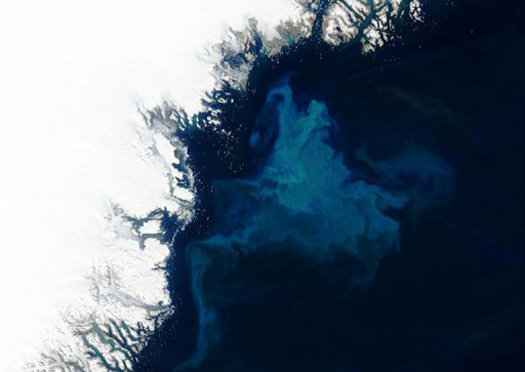
This NASA Aqua satellite image from 2003 shows clouds of phytoplankton off of Greenland's eastern coast (AFP/NASA/File)
To Email your comments to THIS ISLAND NATION: [email protected]
Follow Tom MacSweeney on Twitter @TomMacSweeney and on Facebook
Antigua On All-Island Visit
Antigua was originally a fishing boat built in 1957 at Thorne, Yorkshire but her appearance is completely different today. Gone are the fish as the vessel spent four years undergoing reconstruction for the purposes of accommodating paying-passengers. The work was completed in 1997 and this has included the provision of sixteen double cabins in luxurious surroundings.
Individual booking cruises can be made on the brigantine and her fleet-mates which are owned by the Tall Ships Company which take passengers on destinations not just in European waters but also to the Arctic.
The company also operate another brigantine the Artemis, the barque Artemis, the schooner Mare Frisium and the clipper Elizabeth. For further information about the company click here.
Controversy Over New Howth Building
A new building has appeared overnight beside Howth Yacht Club during the Christmas period, and a row is simmering as to whether it has full planning permission. Sailors Declan MacManus and Robert Kerley, leaders of the construction team, anticipate receiving full retrospective planning permits. In fact, they hope that it will soon become a listed building, as it is a cool re-creation of the famous monastic beehive cells on Skellig Michael, and is also an important interpretation of the classic Inuit vernacular style traditional to Arctic regions.
With Ireland now expected to enter a new mini-Ice Age by 2035, they also anticipate that the Government's Emergency Response Committee will wish to retain them as consultants for future building projects. The new house is tastefully if sparsely furnished with IKEA's Fishbox Range, which is being introduced for 2011. It provides an unusual and comfortable venue to add to Howth's many bustling hospitality hotspots.
A representative of the local planning authority has reportedly said that they are putting the matter of planning permission on ice until after the holidays, and they expect that in due course the matter will simply melt away to provide an Irish solution to an Irish problem.
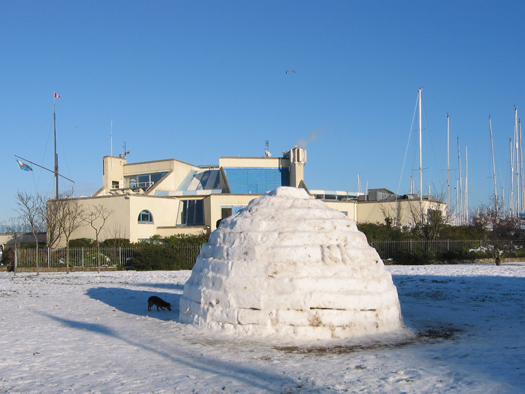
Howth YC is concerned about this new building which has suddenly appeared – without planning pemission - beside the clubhouse

Fully furnished, the new building is the centre for the training of a team of unique Mini Jack Russell Huskies


























